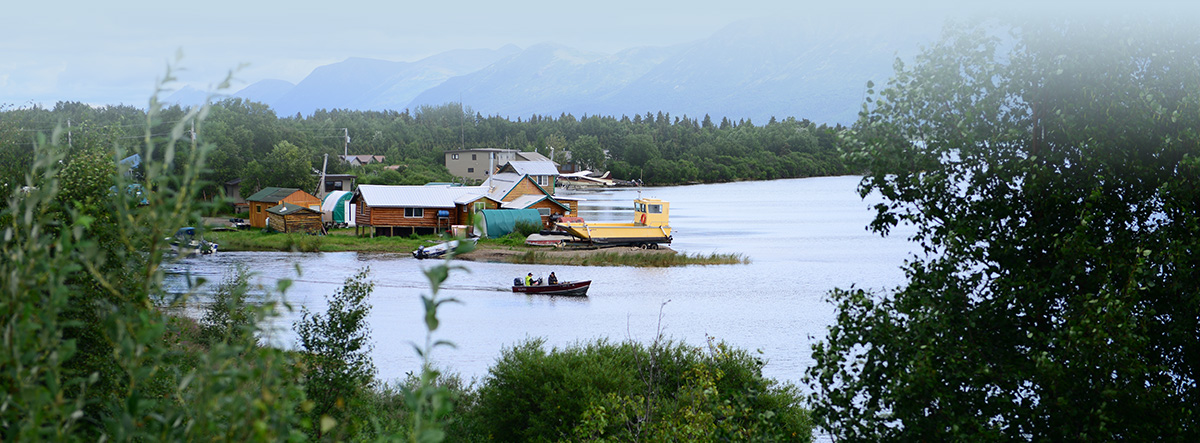

The 2020 Census started on January 21, 2020, in Toksook Bay, Alaska. This once-a-decade population count determines how much funding our communities receive for local services, provides data that inform businesses that grow our economy, and helps determine our state’s legislative districts.
The census determines the resources that go to Alaska to help build roads and infrastructure, support hospitals, and deliver public services to children, veterans, seniors and families.
During this once-in-a-decade effort to count the U.S. population, the United States Census Bureau calculates a participation rate for each area, or the percentage of questionnaires mailed back by households that received them. In 2010, Alaska had the lowest participation rate in the nation at 64 percent. Thinking about it another way, that means over one-third of Alaskans DID NOT respond upon the Census Bureau’s first invitation to participate.
A similar undercount of our state in 2020 means Alaska will not receive its full share of federal funding for the following 10 years. In the face of increasing state and local budget constraints, we cannot afford an undercount in 2020.
Your individual responses to the 2020 Census are confidential and can only be used to produce statistics. This includes responses on census questionnaires, names, addresses, and residential locations.
By law, the U.S. Census Bureau cannot share an individual’s information with immigration enforcement agencies, law enforcement agencies, or allow it to be used to determine your eligibility for government benefits. This means that a landlord, employer, or business will never have access to your responses to the census.
It is a felony for Census Bureau employees to publish or distribute individual responses or any information that would identify an individual, business, or organization. Employees who view individual census responses are sworn to protect the confidentiality of those data for life – anyone who wrongfully discloses census data is subject to a fine of up to $250,000 and a prison sentence of up to five years.
An accurate count is critical for Alaskan businesses and nonprofits to invest strategically in communities across our state. Census data allows these entities to understand local markets and their constituencies and to plan accordingly for the future.
Rural areas without city-style addresses, including remote villages, will not be mailed a census form. Instead, the Census Bureau will use alternative enumeration practices.
Find your community on this map to see how the Census Bureau will invite you to participate.
There are several Types of Enumeration Areas (TEA), or tracts, in Alaska:
For more information, download this flyer about how Alaskans will be counted.
Applications will be reviewed on a rolling basis, and you can expect to hear back within two weeks of submission. Click here to read more about mini-grants and download the application.

Complete Count Committees (CCCs) are volunteer committees that increase awareness about the importance of the census and motivate residents to respond. Committee members represent a cross section of each community, including government agencies; tribes; education, business, nonprofit, and faith-based organizations; and the media.

The U.S. Census Bureau will hire 1,000 Alaskans to staff area census offices, partner with communities, and conduct field work, including counting, or enumeration. Click here to learn more about 2020 Census Recruitment.
Encourage Alaskans to apply for flexible, part-time Census jobs TODAY.

We need trusted community leaders to help educate Alaskans about the importance of the Census and to engage, encourage, and ensure self-response and participation.
In the digital age of high volumes and multiple sources of information, compounded by distrust of unfamiliar information sources, local voices of leadership are critical to achieving an accurate count in 2020.
Local census takers, or enumerators, will start counting Alaskans in villages and rural Alaska communities in January 2020. Residents of Anchorage, Fairbanks and other large Alaska cities will respond to the 2020 Census online, by phone, or mail in mid-March. Participation in the census is required by law.
As the country’s largest and least densely populated state, Alaska has one of the hardest populations to count. But an accurate count is vital; an undercount of Alaskans means our state fails to receive its fair share of federal resources.
Timeline for the 2020 Census in Alaska: